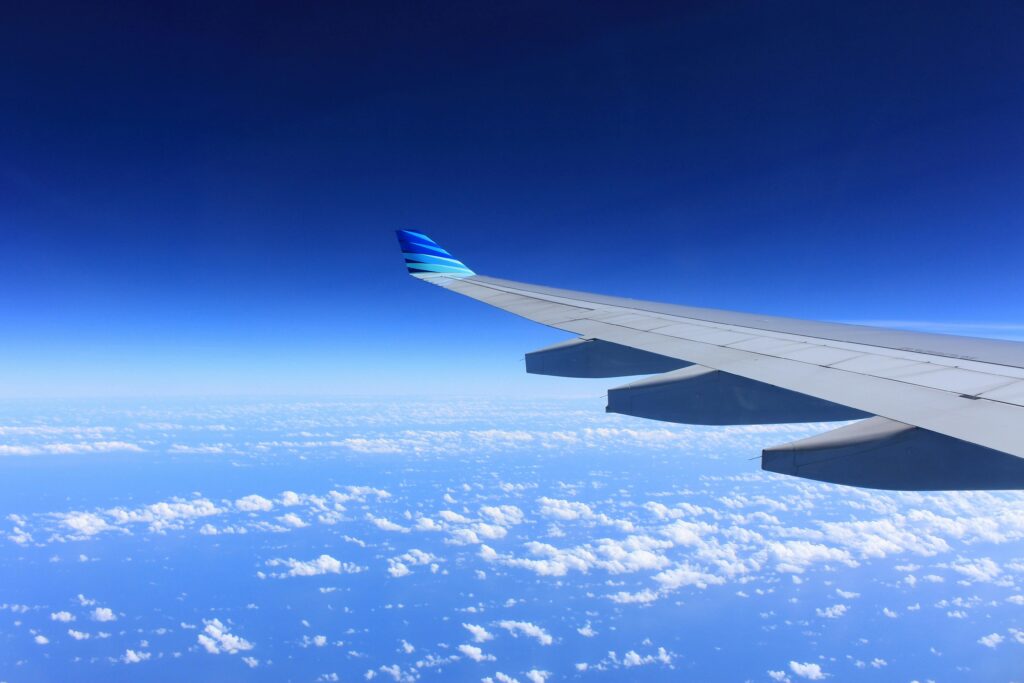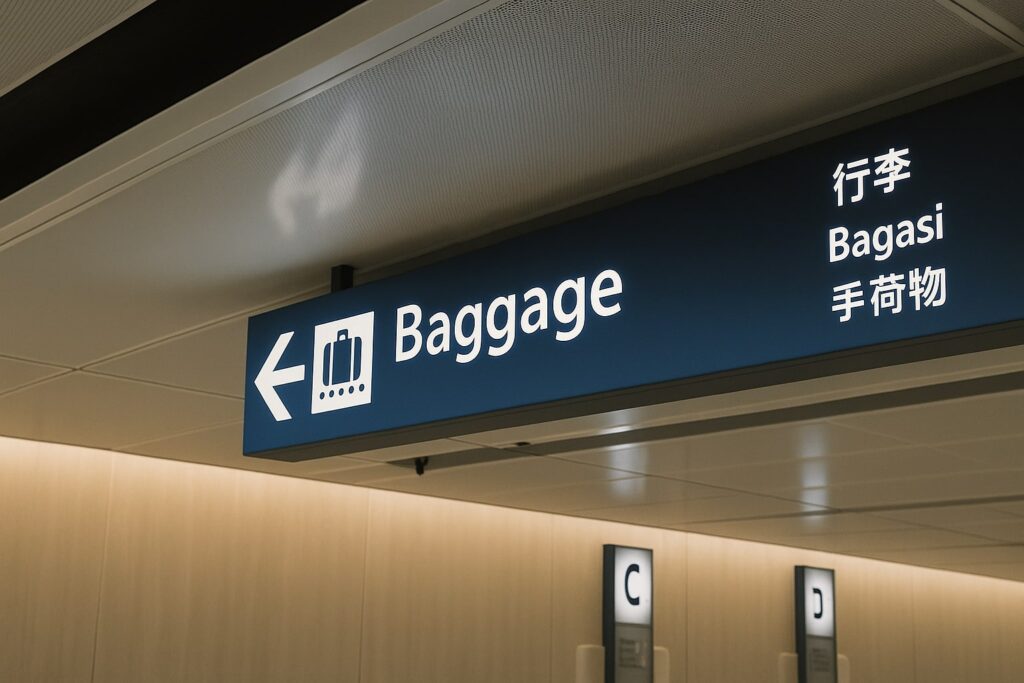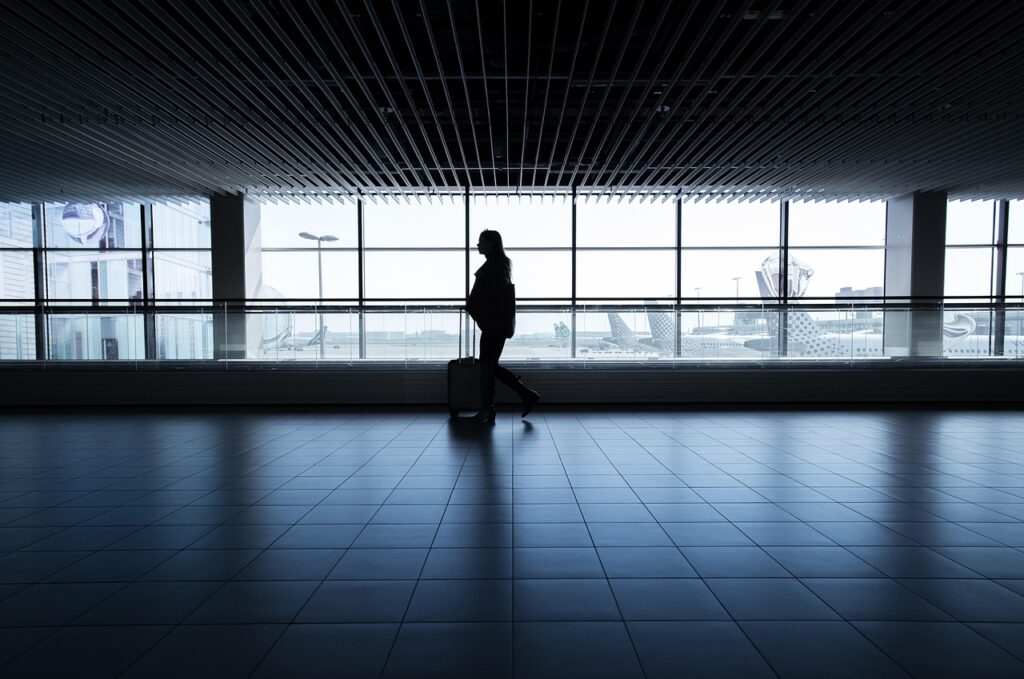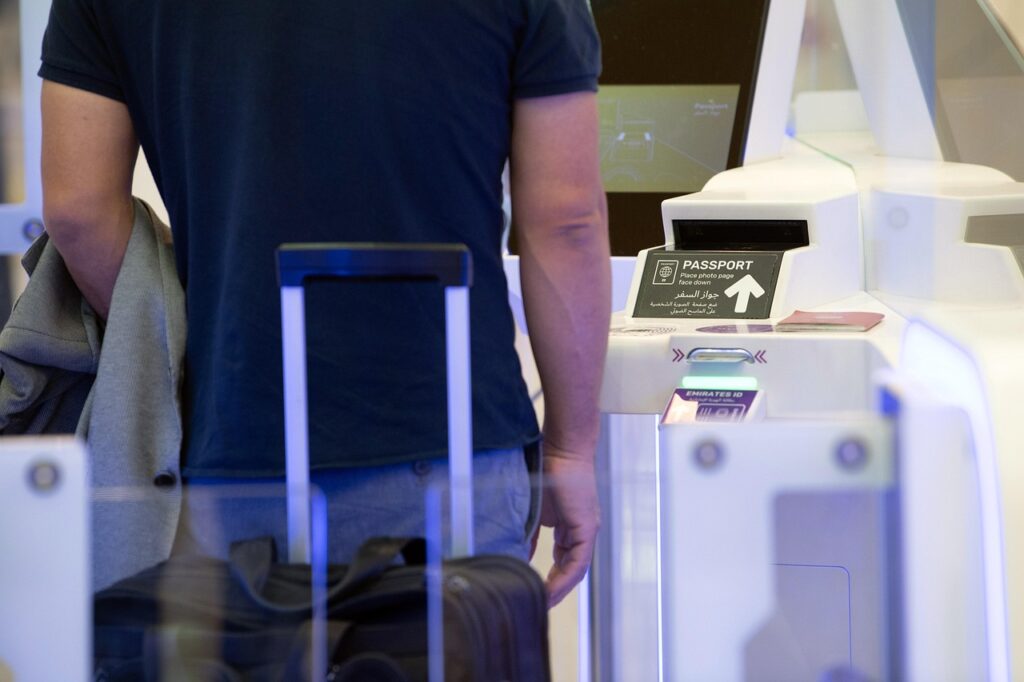Your first time flying can feel like stepping into a whole new world—airports buzzing with travelers, the rush of take-off, the careful rules around baggage. If you’re feeling a bit anxious, you’re not alone. But here’s the good news: a little preparation can make all the difference.
This guide covers 15 essential tips for first-time flyers, from packing and check-in to what to expect at the airport and in the air. With these insights, you’ll feel prepared and confident as you navigate your journey—turning those nerves into excitement!
What to Expect When Flying for the First Time

As the introduction mentioned, flying for the first time can be an overwhelming experience. There are quite a few things you can expect over the course of the process, and this section breaks them down into three sections: pre-flight, during, and after.
Pre-Flight:
- The first step is to book your ticket and select your seat as early as possible so you get your seat of choice.
- You’ll have to carry some form of proof of identity, such as a passport, along with an e-ticket.
- You’ll have to ensure that you pack your baggage according to the terms of the ticket, both in the number of pieces and the total weight.
During the Flight:
- The takeoff and landing can sometimes be bumpy, especially if the conditions are wet, windy, or generally turbulent.
- You might be served a meal depending on the duration of the flight. Most short-haul, regional airlines may not offer you a meal, but this isn’t the case on a long-haul flight.
- You’ll have to acquaint yourself with the safety instructions to ensure you know the best course of action during an emergency.
After the Flight:
- Once you’ve landed, you’ll deboard the plane and can collect your baggage from the designated belt. If you’re flying internationally, you’ll also have to deal with immigration and your visa.
- Once all your formalities are complete, you can exit the airport.
While there are several other steps in the process, this section has just offered a brief overview of the key points. The forthcoming sections elaborate on 15 key tips for first time flyers that can help you make your first experience on a flight a smooth one.
1. Choose the Right Day to Fly
Air travel can be expensive and one of the best ways to ensure your trip stays within your budget is to pick the cheapest days to fly. The middle of the week (Tuesdays and Wednesdays) is typically the cheapest time to fly, while weekends tend to be comparatively more expensive. This is because the middle of the week usually sees less demand, so airlines reduce their fares to ensure their flights are filled to capacity.
You should ideally book your tickets about 70 days before the date of travel as this is likely to get you the best prices but keep in mind that you should keep monitoring ticket prices and make a decision for yourself.
2. Book Your Seat in Advance
Booking your seat well in advance or during the time of purchasing your ticket can significantly influence how comfortable your journey is, making it one of the most important things to know when flying for the first time. Window seats are often the most popular as these give you the benefit of a great view along with increased elbow space. The middle seat, on the other hand, is usually the least comfortable since you’re likely to have two people on either side of you.
If you’re not particularly keen on the view and would rather have easier access to the restrooms on board the flight, you can pick an aisle seat. This can be particularly beneficial over a longer flight as you won’t have to squeeze past someone if you want to use the lavatories.
3. Check-In Online to Save Time
Checking in online before your flight can be a brilliant way to save yourself time at the airport. Most airlines allow you to check in via their apps or websites, making the process quick and easy. The window to check in typically opens 24 hours before take-off and closes around an hour before take-off, whereas it closes 90 minutes prior in the case of an international flight.
While you can also choose your seat as a part of this process, you must keep in mind that the best and cheapest seats are likely to have already been reserved. This is why it’s usually best to do this step well in advance when you book yourself a ticket.
Checking in online can save you plenty of time, especially if you’re only carrying hand luggage, as you can directly head to the security check with your digital boarding pass. However, if you have luggage to check-in, you will have to wait in line to get it weighed, stamped, and dropped off.
4. Understand Baggage Allowances

Every airline has specific rules about how many pieces of luggage you can carry and how much they must weigh. You should adhere to these rules to avoid having to pay extra for any luggage you may be carrying on the day of your flight. This is one of the most critical tips for first-time flyers and can save you from having to pay a surcharge on extra luggage. Understanding what size bag is allowed for hand luggage is crucial, as exceeding the airline’s dimensions can result in additional fees or the need to check your bag. Similarly, knowing what is allowed in a carry-on bag is essential to prevent delays or confiscation of items during security checks. You should ideally weigh your luggage before you arrive at the airport to ensure you’re within the permitted limits.
Besides the weight and the size, you should also ensure that you aren’t carrying items like flammable liquids, weapons, sharp objects, and certain foods. You’ll see a list of these items on the airline’s website when you check-in.
| Baggage Type | Size & Weight Limit | Included in Fare? | Extra Fees? |
| Personal Item | Fits under seat (40x20x25 cm) | ✅ Yes | No extra charge |
| Carry-On Bag | 7-10 kg (varies by airline) | ❌ No | $10-$50 |
| Checked Luggage | 15-23 kg (varies by airline) | ❌ No | $30-$100 |
Pro Tip: Weigh your bags at home to avoid last-minute surprises at the airport!
5. Dress for Comfort
Comfort is of the utmost importance when deciding what to wear for your first flight, especially so if it’s a long-haul flight. Here are a few key tips that can help:
- Follow the idea of layering up your clothing, as the temperatures can fluctuate at the airport, during boarding, or on the flight.
- Wear loose, comfortable clothing in materials like cotton and linen so your body can breathe, and you don’t feel excessively sweaty.
- Ensure that you wear comfortable shoes as you might have to spend a fair bit of time on your feet during check-in, the security check, and while boarding your flight. You should also wear shoes that are easy to remove during security checks. A pair of loafers is ideal, whereas boots could prove to be cumbersome to remove and put on.
6. Bring Essential In-Flight Accessories
When preparing for a flight, you should ideally carry some in-flight accessories that could help make your journey a lot more comfortable. For example, a pair of noise-canceling headphones can be perfect to block out ambient noises when you want to sleep or simply listen to some music or watch a movie. A travel pillow and an eye mask can also be life-savers, especially if you plan on catching up on sleep.
A power bank is another essential you should carry with you, especially if you plan on using your smartphone to watch a movie or access some other form of entertainment. This way, you can ensure you have enough charge on your device until you get to your destination.
7. Pack Your Own Snacks
While some flights offer in-flight meals that you can pre-book or buy on board the aircraft, others may not depending on the airline and the duration of the flight. In such cases, it can be a good idea to carry a few snacks of your own so you can sustain yourself until your next meal. They can also come in handy if you don’t want to pay for food on the flight.
A few food items that you can carry past TSA include sandwiches, cheese, fruit, or even chocolate. However, there are specific restrictions you must keep in mind when packing your snacks. Liquids, when packed in your carry-on luggage, for instance, must be stored in a container that can carry no more than 3.4 ounces or 100 milliliters.
8. Arrive Early at the Airport

Most airlines recommend arriving at the airport at least three hours prior to an international flight and at least two hours before a domestic one. However, these are just general guidelines, and your arrival will depend on factors such as the airport’s size and popularity, the time of day, and if you’re traveling during the peak season. Knowing how early you should get to the airport is very important to avoid unnecessary stress.
Arriving at the airport early ensures you have enough time to check in (the queues can sometimes be really long), go through security, find your gate, and have enough time to rest before boarding your flight.
While there are a few ways you can speed up this process, such as checking in online and buying yourself a business class ticket with priority boarding, it’s always best to give yourself enough time to account for a potential delay.
9. Ensure You Have the Right Travel Documents
Carrying the right documents is possibly one of the most important tips for first time flyers. The documents and proof of identity you carry will depend on whether you’re traveling domestically or internationally, and where you’re traveling to and from. Here are the key documents you need to carry when you’re flying domestically:
- From the US: You’ll need to carry an approved form of identification, such as a REAL ID-compliant driver’s license or a passport.
- From the UK: UK citizens will need a photo ID card but a passport is also a valid form of identification. However, some airlines may require additional documents, so you should check their websites well beforehand.
- Within the EU: As an EU citizen, you’ll need to carry a valid national identity card or a passport as a valid form of identification.
Here’s what you should carry if you’re flying internationally:
- From the US: A valid passport, visa, and proof of onward travel if applicable are essential documents to carry.
- From the UK: A valid passport and a visa (for whichever country is applicable) are essential.
- From the EU: A passport, visa (wherever applicable) and a return ticket depending on the rules of the destination country are essential. Flights within the EU require the same documents as domestic flights.
10. Be Ready for Airport Security

Security checks can be one of the most overwhelming aspects of air travel, especially for first-time flyers. This is why it can help if you familiarize yourself with everything you can expect. For instance, most airports will require you to take off your shoes, belt, jackets, and any other clothing that has metal in it. You’ll have to place these items in separate trays so they can be screened. Besides these items, here are the others you’ll need to have screened:
- All liquids must adhere to the 3-1-1 rule, with liquids being in a 3.4-ounce container or smaller, and must fit in a 1-quart clear, plastic, zip lock bag, with one bag per passenger.
- Laptops and other large electronics
- Watches
- Sunglasses
You’ll also have to be prepared to walk through a metal detector or a full-body scanner. You’ll have to remove your shoes (although this depends from one country to another), along with your belt and other accessories. If you have any questions, you can always ask the security personnel to help you out.
Pro Tip: Place small essentials (wallet, phone, passport) in a zippered pouch to keep everything in one place.
11. Download the Airline’s App
Downloading the airline’s app on your smartphone can be a helpful way to check in online and access your e-boarding pass so you can directly head to the security check (if you’re only carrying a carry-on). The app can also give you an overview of your flight status, so you can keep yourself updated with any potential delays or cancellations.
Additionally, many airlines also provide in-flight entertainment via the app, so downloading it in advance can ensure a more comfortable journey.
12. Consider Travel Insurance
Despite your best efforts to prepare well before your flight, there’s always a chance that something could go wrong. Your flight could get delayed or canceled, or you might even end up with your baggage lost. Purchasing travel insurance can help compensate you for a part of the expenses so you’re not entirely at a loss.
You could choose from a plan that compensates you for lost baggage, delays, or cancelations or opt for a more comprehensive plan that also offers medical coverage in the event of an evacuation. Some credit cards also offer you a certain degree of protection from lost baggage or flight cancellation insurance.
13. Plan How to Spend Your Time on the Flight
While most airlines offer some form of in-flight entertainment, you could find yourself in a situation where the display doesn’t work or the system is dysfunctional. As a result, it’s never a bad idea to carry some form of entertainment of your own. You could bring a book or even a tablet with a few movies or TV shows downloaded so you can entertain yourself for the journey.
14. Know Your Passenger Rights
Besides all the other tips mentioned in this guide, the most important thing to know before flying for the first time is your air passenger rights. Like any other mode of transport, flights occasionally encounter delays, cancellations, and even situations where your baggage is lost. Knowing your rights in these situations can ensure you can be compensated for the inconvenience caused.
Besides monetary compensation, airlines must also provide care in the form of food and beverages in the event of a long delay, two phone calls, or a satisfactory alternative flight.
15. Be Prepared for What Happens After you Land
Last but not least, you should be prepared for all the formalities once you land. While you’re about 30 minutes from landing, you’ll be required to make your seats upright, fasten your seat belts, turn off any devices such as laptops and tablets, and store them in your carry-on. The landing could be as smooth as butter or a little rough if conditions are turbulent, but your seat belt will keep you safe in place.
Once you’ve landed, don’t rush to grab your bags and exit the aircraft. The cabin crew will ensure that everyone deboards methodically, and it’s essential that you remain respectful of your fellow passengers.
At the airport, you’ll have to make your way to the immigration counter (for international flights), whereas you can make your way to the baggage claim area if you’re flying domestically. Grab your luggage, purchase a SIM card if you need one, and book yourself a cab to take you to your destination. If you’re staying at a hotel, you can also request to have them pick you up, saving you the trouble of having to pay higher prices for an airport taxi.
First-Time Flyer Survival Guide
| Aspect | Summary |
| Booking | Book early & choose a seat for comfort. |
| Baggage | Follow airline size & weight limits to avoid fees. |
| Check-In | Use online check-in to save time at the airport. |
| Airport Arrival | Arrive 2-3 hours before departure. |
| Packing Essentials | Bring headphones, travel pillow, charger, and snacks. |
| Security Tips | Follow the 3-1-1 rule for liquids & remove electronics. |
| After Landing | Go through immigration (if international) & claim your baggage. |
Your first flight doesn’t have to be stressful! Prepare in advance, arrive early, and stay calm—you’ll be a confident flyer in no time!
FAQ
It’s perfectly normal for you to be nervous if you’re flying for the first time. However, with the right preparation, you can ensure that your journey is as easy as possible.
Here are a few things you should do if you’re flying alone for the first time:
- Book your tickets well in advance to get the best prices.
- Check-in online using the airline’s app or website and choose your ideal seat.
- Carry your official identification (passports, REAL ID driver’s license, etc.)
- Download and save your e-boarding pass.
- Pack according to your baggage allowance.
- Wear comfortable clothing.
- Carry some in-flight entertainment.
- Know your passenger rights.
